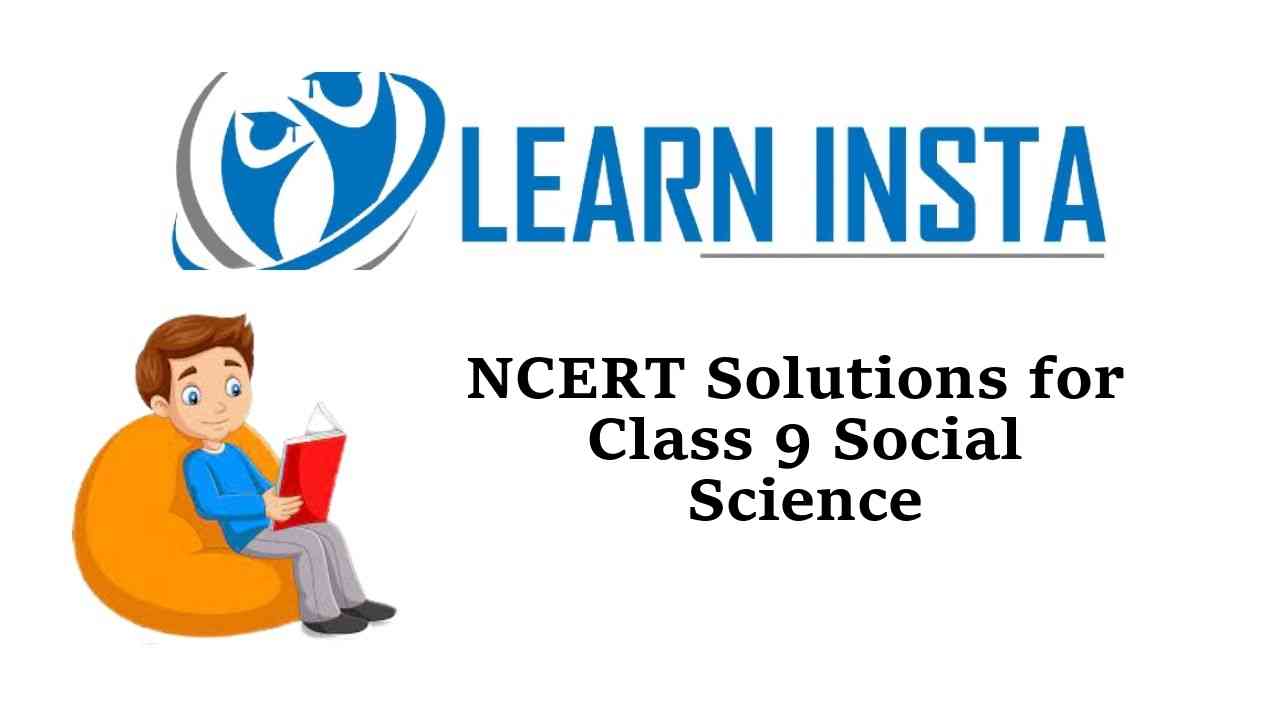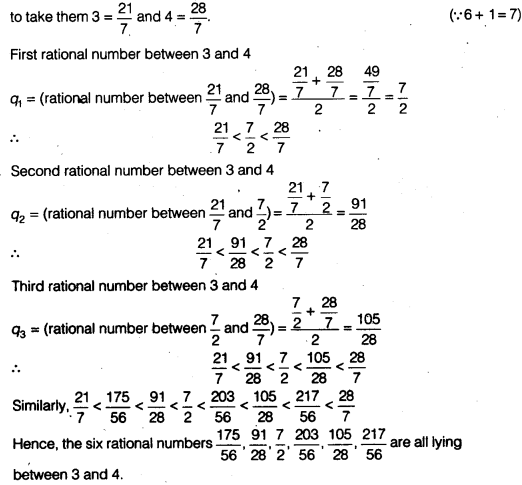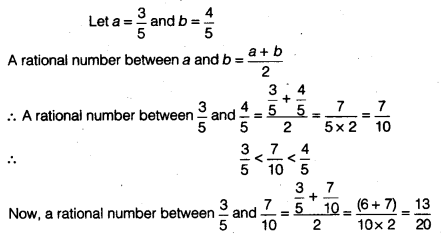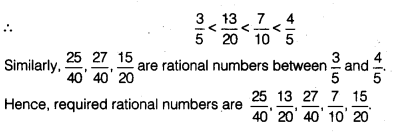NCERT Solutions for Class 9 Hindi Kshitij Chapter 1 दो बैलों की कथा
These Solutions are part of Class 9 Hindi NCERT Solutions. Here we have given NCERT Solutions for Class 9 Hindi Kshitij Chapter 1 दो बैलों की कथा.
पाठ्य-पुस्तक के प्रश्न-अभ्यास
प्रश्न 1.
कांजीहौस में कैद पशुओं की हाज़िरी क्यों ली जाती होगी? [CBSE]
उत्तर:
कांजीहौस में कैद पशुओं की हाजिरी इसलिए ली जाती होगी ताकि यह देखा जा सके कि-
- कोई पशु भाग तो नहीं गया।
- कोई पशु बीमार तो नहीं है।
- कोई पशु बाड़े की दीवार को नुकसान तो नहीं पहुँचा रहा है।
- नीलामी भर के लिए पेश हो गए हैं या नहीं।
प्रश्न 2.
छोटी बच्ची को बैलों के प्रति प्रेम क्यों उमड़ आया? [Imp.][CBSE]
उत्तर:
छोटी बच्ची का बैलों के प्रति प्रेम उमड़ने के निम्नलिखित कारण हैं
- छोटी बच्ची को उसकी सौतेली माँ सताती थी, यहाँ गया हीरा-मोती पर अत्याचार कर रहा था।
- छोटी बच्ची की माँ मर चुकी थी। उसे अपनों से बिछड़ने के दुख का ज्ञान था।
- छोटी बच्ची माँ के मरने को अपना दुर्भाग्य मानती थी। वह हीरा-मोती को। उनका घर छूटने के कारण उन्हें अपने जैसा ही अभागा समझती थी।
- छोटी बच्ची छल-प्रपंच से अभी दूर थी। उसका निश्छल मन हीरा-मोती पर होते अत्याचार को देख कर द्रवित हो गया, और प्रेम उमड़ आया।
प्रश्न 3.
कहानी में बैलों के माध्यम से कौन-कौन से नीति-विषयक मूल्य उभर कर आए हैं? [Imp.]
उत्तर:
कहानी में बैलों के माध्यम से अनेक नीति विषयक मूल्य उभरकर सामने आए हैं-
- किसी व्यक्ति को अत्यधिक सीधेपन और सहनशीलता के कारण बेवकूफ़ नहीं समझना चाहिए।
- मनुष्य हो या पशु उन्हें अपने धर्म और कर्तव्य का पालन करना चाहिए।
- मित्र को संकट में छोड़कर नहीं जाना चाहिए।
- संगठन में शक्ति है। संगठित होकर बड़ी से बड़ी समस्या को हल किया जा सकता है।
- पराजित दुश्मन के प्रति सदयता दिखानी चाहिए।
- औरतों का सम्मान करना चाहिए।
- अधिकाधिक भलाई करते रहना चाहिए।
प्रश्न 4. प्रस्तुत कहानी में प्रेमचंद ने गधे की किन स्वभावगत विशेषताओं के आधार पर उसके प्रति रूढ़ अर्थ ‘मूर्ख’ का प्रयोग न कर किस नए अर्थ की ओर संकेत किया है?
उत्तर:
गधे को उसके स्वभाव के आधार पर मूर्खता का पर्याय समझा जाता है, पर लेखक प्रेमचंद ने उसकी स्वाभाविक विशेषताओं, सरलता और सहनशीलता के आधार पर एक नए अर्थ की ओर हमारा ध्यान खींचा है। गधे में निहित गुणों के आधार पर लेखक ने उसकी तुलना ऋषि-मुनियों से की है। सुख-दुख, लाभ-हानि तथा विपरीत परिस्थितियों में एक जैसा बने रहने के गुण के कारण लेखक ने उसके सरल और सहनशील होने की ओर संकेत किया है।
प्रश्न 5.
किन घटनाओं से पता चलता है कि हीरा और मोती में गहरी दोस्ती थी? [CBSE]
उत्तर:
हीरा-मोती में गहरी मित्रता थी, यह एक नहीं अनेक-घटनाओं से पता चलता हैं, जैसे-
- दोनों एक साथ नाद में मुँह डालते, एक साथ हटाते।
- दोनों सायंकाल एक-दूसरे को चाट-चूटकर थकान मिटाते थे।
- दानों के विचार परस्पर मिलते थे।
- काम के समय दोनों एक-दूसरे का बोझ अपने कंधों पर लेने की कोशिश में रहते थे।
- किसी आकस्मिक संकट का दोनों मिल-जुलकर मुकाबला करते थे।
- दोनों में कोई भी किसी दूसरे को संकट में छोड़कर नहीं जाता था।
- दोनों एक-दूसरे के साथ जीना-मरना चाहते थे।
प्रश्न 6.
लेकिन औरत जात पर सींग चलाना मना है, यह भूल जाते हो।’-हीरा के इस कथन के माध्यम से स्त्री के प्रति प्रेमचंद के दृष्टिकोण को स्पष्ट कीजिए। [CBSE]
उत्तर:
हीरा के कथन से लेखक का दृष्टिकोण ज्ञात होता है कि उस समय समाज में स्त्रियों की स्थिति अच्छी नहीं थी। वे पुरुषों द्वारा शोषित थीं। सामाजिक नियमों के अनुसार स्त्रियों को शारीरिक दंड देना अनुचित है। लेखक स्त्रियों की प्रताड़ना का विरोधी है। वह नारियों के सम्मान का पक्षधर है। वह स्त्रियों तथा पुरुषों की समानता का पक्षधर है।
प्रश्न 7.
किसान जीवन वाले समाज में पशु और मनुष्य के आपसी संबंधों को कहानी में किस तरह व्यक्त किया गया है? [Imp.]
उत्तर:
‘दो बैलों की कथा’ नामक इस कहानी में लेखक ने किसान जीवने वाले समाज में पशु और मनुष्य के आपसी संबंधों को भावनात्मक और आत्मीय रूप में दिखाया है। झूरी किसान है। वह अपने दोनों बैलों हीरा-मोती से विशेष लगाव एवं स्नेह रखता है। वह उनके चारे-पानी का ध्यान रखता है। वह उन्हें अपमानित यो दंडित नहीं करता है। गया के घर से भाग कर आने पर वह उन्हें गले लगा लेता है।
इधर गया के साथ जा रहे बैलों के मन में भी भ्रम उत्पन्न हो जाता है कि उन्हें बेच दिया गया है। वे हर मुसीबत का सामना करते हुए भी गया के घर आने को उत्सुक रहते हैं। बैलों पर एक ओर गया जहाँ अत्याचार करता है, वही दूसरी ओर छोटी बालिका उन्हें रोटियाँ खिलाकर उनसे स्नेह करती है और भावी संकट के प्रति उन्हें सचेत करती हुई उनकी रस्सियाँ खोल देती है। इसी तरह कांजीहौस में नीलाम होने के बाद जब हीरा-मोती घर लौटते हैं तो झूरी ही नहीं उसकी पत्नी भी बैलों को माथा चूम लेती है। उनके आने से सबसे अधिक खुशी बच्चों को होती है जिससे बैलों के प्रति उनके भावनात्मक एवं आत्मीय लगाव प्रकट होता है।
प्रश्न 8.
इतना तो हो ही गया कि नौ दस प्राणियों की जान बच गई। वे सब तो आशीर्वाद देंगे’-मोती के इस कथन के आलोक में उसकी विशेषताएँ बताइए। [CBSE]
उत्तर:
मोती के उक्त कथन के आलोक में उसकी निम्नलिखित विशेषताएँ प्रकट होती हैं
- मोती स्वभाव से उग्र जरूर है पर दयालु भी है।
- मोती का स्वभाव परोपकारी है। वह कांजीहौस में बंद जानवरों की जान बचाता है।
- मोती सच्चा मित्र है। वह मुसीबत के समय हीरा का साथ नहीं छोड़ता है।
- मोती अत्याचार का विरोधी है। वह कांजीहौस की दीवार तोड़कर अत्याचार का विरोध करता है।
- मोती साहसी है। वह हीरा की मदद से साँड़ को पराजित करता है।
प्रश्न 9.
आशय स्पष्ट कीजिए
(क) अवश्य ही उनमें कोई ऐसी गुप्त शक्ति थी, जिससे जीवों में श्रेष्ठता की दावा करने वाला मनुष्य वंचित है।
(ख) उस एक रोटी से उनकी भूख तो क्या शांत होती; पर दोनों के हृदय को मानो भोजन मिल गया। [CBSE]
उत्तर:
(क) इस कथन के माध्यम से लेखक यह कहना चाहता है कि हीरा और मोती अपने विचारों का आदान-प्रदान मूक भाषा में कर लेते थे। वे एक-दूसरे के मन की बातें जान समझ लेते थे। यही उनकी पक्की दोस्ती का आधार था। वे मूक भाषा में सलाह कर बड़े से बड़े संकट का हल खोज लेते थे। मनुष्य जो सभी जीवों में स्वयं को श्रेष्ठ मानता है। उसके पास यह शक्ति नहीं है। इस मामले में वह पशुओं से हीन है।
(ख) हीरा-मोती ऊँची कद काठी वाले बैल थे। उन्हें पर्याप्त चारे के रूप में भोजन की जरूरत थी। वे गया द्वारा दिया गया सूखा भूसा नहीं खाते थे। ऐसे में नन्हीं बालिका द्वारा खिलाई गई एक रोटी से उनकी उदर पूर्ति कैसे होती, पर प्रेम से उन्हें आत्म संतुष्टि अवश्य होती। इस संतुष्टि के भाव से ही वे प्रसन्न हो उठते थे।
प्रश्न 10.
गया ने हीरा-मोती को दोनों बार सूखा भूसा खाने के लिए दिया क्योंकि
(क) गया पराये बैलों पर अधिक खर्च नहीं करना चाहता था।
(ख) गरीबी के कारण खली आदि खरीदना उसके बस की बात न थी।
(ग) वह हीरा-मोती के व्यवहार से बहुत दु:खी था।
(घ) उसे खली आदि सामग्री को जानकारी न थी।
(सही उत्तर के आगे (✓) का निशान लगाइए।)
उत्तर:
(ग) वह हीरा-मोती के व्यवहार से बहुत दुखी था।
रचना और अभिव्यक्ति
प्रश्न 11.
हीरा और मोती ने शोषण के खिलाफ़ आवाज़ उठाई लेकिन उसके लिए प्रताड़ना भी सही। हीरा-मोती की इस प्रतिक्रिया पर तर्क सहित अपने विचार प्रकट करें।
उत्तर:
हीरा-मोती परिश्रमी और सहनशील थे पर जब-जब उन्हें शोषण का सामना करना पड़ा तब-तब उन्होंने इसके खिलाफ आवाज़ उठाई, भले ही इसके लिए उन्हें प्रताड़ित किया गया। हीरा-मोती का शोषण उसी समय से शुरू हो जाता है जब वे गया के साथ पहली बार जा रहे थे। वे गया के साथ जाना नहीं चाहते थे पर गया उन्हें बलपूर्वक ले जा रहा था। इस शोषण का विरोध करते हुए वे रात में ही उसके घर से भागकर वापस आ गए।
गया जब उन्हें दुबारा ले गया और हल में जोत दिया तो इस शोषण का उन्होंने विरोध करते हुए कदम न उठाया इससे गया ने दोनों की खूब पिटाई की। इससे क्रुद्ध मोती हल लेकर भागा, जिससे जुआ-जोत सब टूट गए। गया के घर से पुनः भागते हुए वे साँड से भिड़कर शोषण का मुकाबला करने लगे। कांजीहौस में बंद होने और वहाँ चारा-पानी न मिलने के विरुद्ध उन्होंने भरपूर प्रयास किया और बाड़े की दीवार ढहाकर अन्य पशुओं को आजाद करा दिया। इसी तरह दढ़ियल के साथ जाते हुए उन्होंने अपनी रस्सियाँ छुटाईं और झूरी के थान पर आ पहुँचे। इस प्रकार उन्होंने शोषण के खिलाफ आवाज़ उठाई और प्रताड़ना सही।
प्रश्न 12.
क्या आपको लगता है कि यह कहानी आजादी की लड़ाई की ओर भी संकेत करती है?
उत्तर:
यह कहानी अप्रत्यक्ष रूप से आजादी के आंदोलन से जुड़ी है। ये दो बैल सच्चे भारतीय हैं, जिनमें से एक गाँधी जी की अहिंसा का समर्थक है तो दूसरा उग्र स्वभाव वाला है। दोनों मिलकर आजादी पाने के लिए संघर्षरत रहते हैं। झूरी का घर स्वदेश का प्रतीक है, जहाँ आने के लिए दोनों व्याकुल रहते हैं। उन्हें इसके लिए अनेक बाधाएँ झेलनी पड़ती हैं। जैसे क्रांतिकारियों को कालापानी की सजा होती थी उसी तरह इनको भी कांजीहौस में बंद कर दिया जाता है। वहाँ ये अपने साथियों को मुक्त कराते हैं। दोनों को मारने के लिए बधिक के हाथों बेच दिया जाता है परंतु अंततः ये झूरी के घर अर्थात् स्वदेश वापस आ ही जाते हैं। इस प्रकार निःसंदेह यह कहानी आजादी की लड़ाई की ओर संकेत करती है।
भाषा-अध्ययन
प्रश्न 13.
बस इतना ही काफ़ी है।
फिर मैं भी जोर लगाता हूँ। ‘ही’, ‘भी’ वाक्य में किसी बात पर जोर देने का काम कर रहे हैं। ऐसे शब्दों को निपात कहते हैं। कहानी में से पाँच • ऐसे वाक्य छाँटिए जिनमें निपात का प्रयोग हुआ हो। |
उत्तर:
निपातयुक्त वाक्य
- मैं तो अब घर भागता हूँ।
- बैलों को देखते ही दौड़ा और उन्हें बारी-बारी गले लगाने लगा।
- आएगा तो दूर से ही खबर लूंगा।
- मर जाऊँगा, पर उसके काम तो न आऊँगा।
- हमारी जान को कोई जान ही नहीं समझता।
प्रश्न 14.
रचना के आधार पर वाक्य भेद बताइए तथा उपवाक्य छाँटकर उसके भी भेद लिखिए
(क) दीवार का गिरना था कि अधमरे-से पड़े हुए सभी जानवर चेत उठे।
(ख) सहसा एक दढ़ियल आदमी, जिसकी आँखे लाल थीं और मुद्रा अत्यंत कठोर, आया।
(ग) हीरा ने कहा-गया के घर से नाहक भागे।
(घ) मैं बेचूंगा, तो बिकेंगे।
(ङ) अगर वह मुझे पकड़ता तो मैं बे-मारे न छोड़ता।
उत्तर:
(क) वाक्य भेद-मिश्र
वाक्य प्रधान वाक्य-दीवार का गिरना था
संज्ञा आश्रित उपवाक्य-अधमरे से पड़े हुए जानवर भी चेत उठे।
(ख) वाक्य भेद-मिश्र
वाक्य प्रधान वाक्य-सहसा एक दढ़ियल आदमी आया।
विशेषण आश्रित उपवाक्य-जिसकी आँखें लाल थीं और मुद्रा अत्यंत कठोर।
(ग) वाक्य भेद-मिश्र वाक्य
प्रधान वाक्य-हीरा ने कहा
संज्ञा आश्रित उपवाक्य-गया के घर से नाहक भागे।
(घ) वाक्य भेद-मिश्र
वाक्य प्रधान वाक्य-बिकेंगे
क्रिया विशेषण आश्रित उपवाक्य-मैं बेचूंगा तो
(ङ) वाक्य भेद-मिश्र
वाक्य प्रधान वाक्य-तो मैं बे-मारे न छोड़ता।
क्रिया विशेषण आश्रित उपवाक्य-अगर वह न पकड़ता।
प्रश्न 15.
कहानी में जगह-जगह मुहावरों का प्रयोग हुआ है। कोई पाँच मुहावरे छाँटिए और उनका वाक्यों में प्रयोग कीजिए।
उत्तर:
- जान से हाथ धोना-(मृत्यु को प्राप्त होना) बरफ़ीले तूफ़ान में अनेक पर्वतारोहियों को अपनी जान से हाथ धोना पड़ा।
- दाँतों पसीना आना-(बहुत परेशान होना) चीते को पिंजरे में बंद करने के लिए चिड़ियाघर के कर्मचारियों को दाँतों पसीना आ गया।
- चेत उठना-(सजग उठना) वर्षा की पहली फुहार पड़ते ही जीव-जंतु एवं वनस्पतियाँ चेत उठीं।
- नौ-दो ग्यारह होना-(भाग जाना) पुलिस द्वारा आँसू गैस छोड़ते ही प्रदर्शनकारी नौ दो ग्यारह हो गए।
- अंत करना-(जान से मार देना) पुलिस की एक गोली ने आतंकी का अंत कर दिया।
पाठेतर सक्रियता
प्रश्न 16.
पशु-पक्षियों से संबंधित अन्य रचनाएँ हूँढ़कर पढ़िए और कक्षा में चर्चा कीजिए।
उत्तर:
छात्र स्वयं करें।
Hope given NCERT Solutions for Class 9 Hindi Kshitij Chapter 1 are helpful to complete your homework.
If you have any doubts, please comment below. Learn Insta try to provide online tutoring for you.



